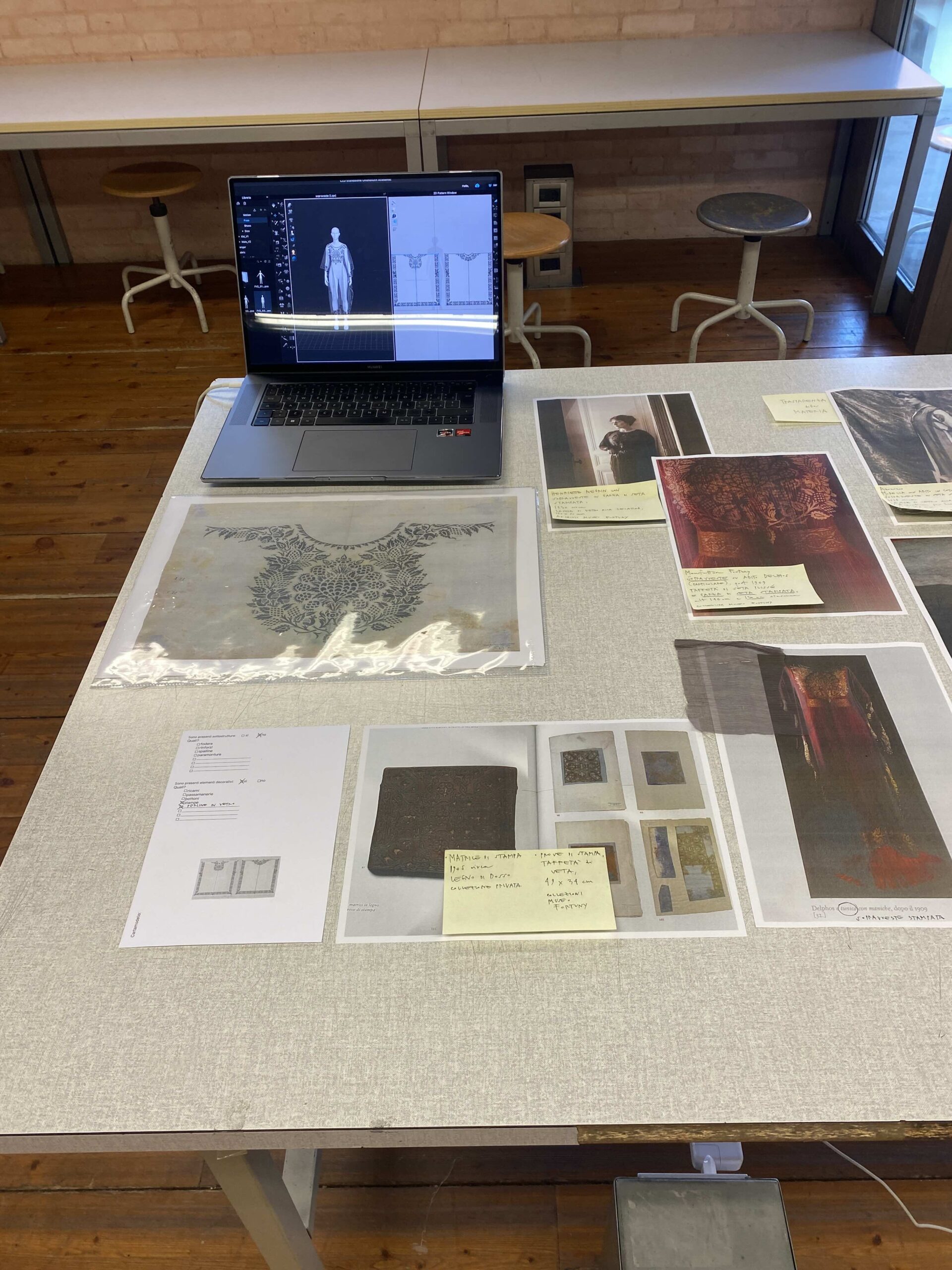
EFHA World 20.10.2025
06.10.2025
digital technologieseducationEuropean fashionItalian fashion
A guest post by the Gianfranco Ferré Research Center – Digital Innovation for the Creative and Cultural Industries to introduce the new Massive Open Online Course (MOOC) presenting the heritage of a Gianfranco Ferré
Unfolding Gianfranco Ferré: a new open course bringing the archive to the public
On September 17, 2025, a new Massive Open Online Course (MOOC) launched on the platform Polimi Open Knowledge (POK): Unfolding Gianfranco Ferré. Curated by the Gianfranco Ferré Research Center – Digital Innovation for the Creative and Cultural Industries, the course invites learners to dive into the heritage of a designer who shaped both Italian and international fashion.
Ferré’s legacy lives on in a remarkable archive – recognized in 2014 by the Italian Ministry of Culture as a collection of “particularly significant historical interest”. This archive preserves not only garments and accessories, but also sketches, photographs, videos, and publications that together trace decades of creative experimentation. Beyond safeguarding artifacts, the archive acts as a cultural resource, bringing to light the methods, ideas, and aesthetics that still inspire fashion today.
The MOOC is the result of the HeriTech4Fashion research project, funded by the Ministry of Universities and Research and coordinated by the Fashion in Process Lab at Politecnico di Milano, in collaboration with the Research Center. The project seeks to make fashion heritage more accessible, drawing on digital tools to create multi-channel learning experiences that connect research, cultural history, and technological innovation.
The archive thus functions as an origin for this fruition. Its numbers are quite impressive: more than 4.000 garments and accessories, around 22.000 drawings, 50.000 photographs, 200 videos, and nearly 1.650 bound volumes of fashion and lifestyle magazines. Much of this has already been digitized, comprising approximately 250.000 records – a living database of creativity and innovation. Yet what makes the archive truly special is not its size, but its ability to convey cultural and educational value. It represents not just a memory of the past, but an active force that continues to evolve and spark new ideas.
The course itself unfolds across three weeks. It begins by introducing the mission of the Research Center and Ferré’s biography narrated through his own words from past interviews and recordings from the archive. In order to do so, the Center’s Deputy Director Federica Vacca and Steering Advisor Rita Airaghi talk about the challenges of creating an archive and keeping it alive, in a conversation with Silvia Schirinzi for the podcast Glamorama from Rivista Studio.
The second week then explores seven key concepts from Ferré’s theoretical and creative approach, in an original podcast titled La Lezione di Gianfranco Ferré (“The Gianfranco Ferré Lesson”) that re-edits original notes from lectures in the archive that the designer has conducted throughout his career in major universities worldwide. The podcast aims to show how Ferre’s approach remains relevant for contemporary fashion and design studies. One highlight is the animated reconstruction of Ferré’s last lecture, delivered in June 2007 at the School of Design at Politecnico di Milano only three days before his passing.
Finally, the third week gives an in-depth look at Ferré’s six design principles – body, matter, color, detail, volume, and movement – brought through an animated video explaining each principle and with the support of interactive 360° imagesof archival garments that allow the user to zoom into and see the details of each construction up-close.
Ultimately, Unfolding Gianfranco Ferré positions the archive not as a static repository, but as a living cultural heritage – a dynamic space where past and present meet, and where the future can be inspired. By blending tradition with digital innovation, the project offers new ways of engaging with fashion’s history, opening it up to a wider and more diverse audience.